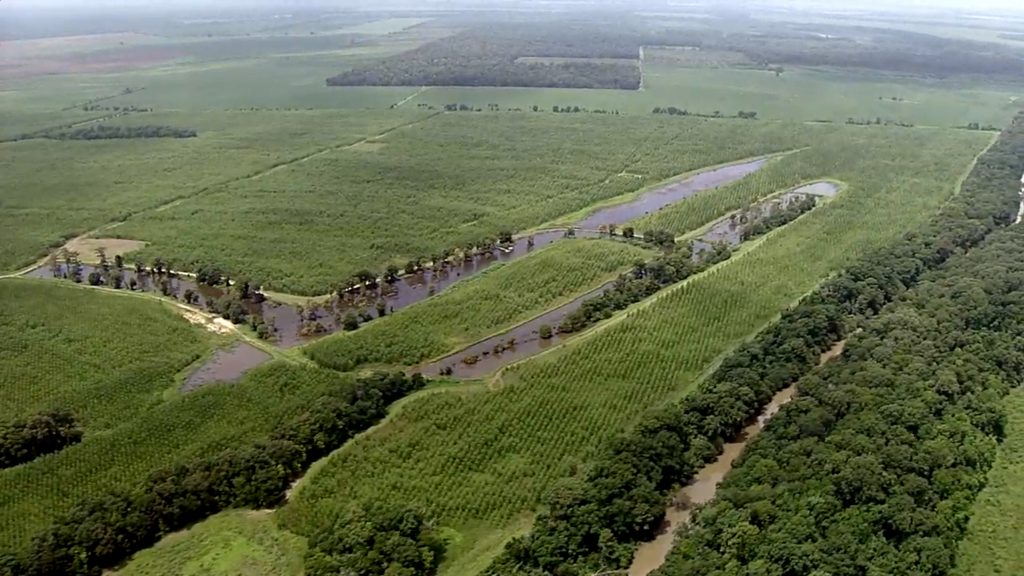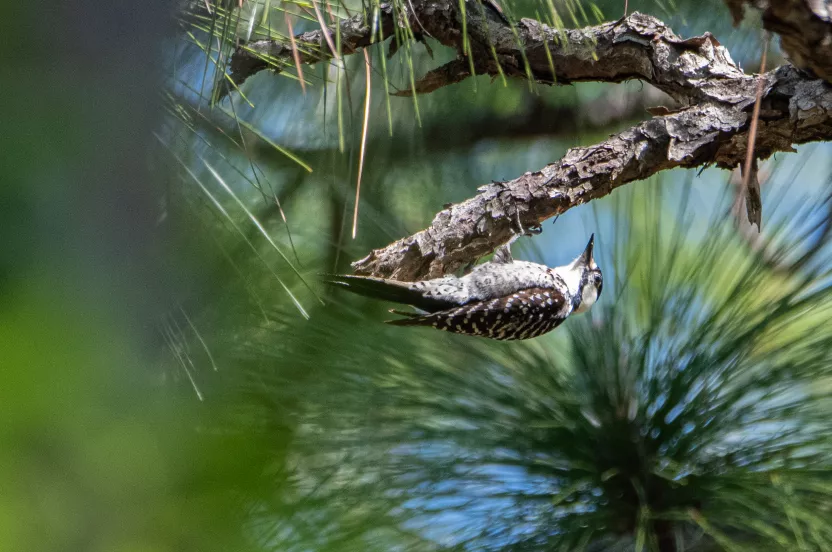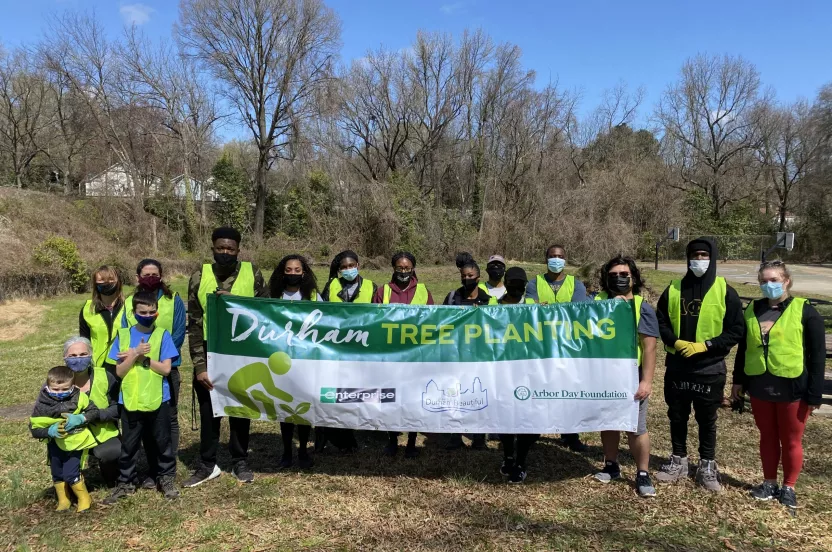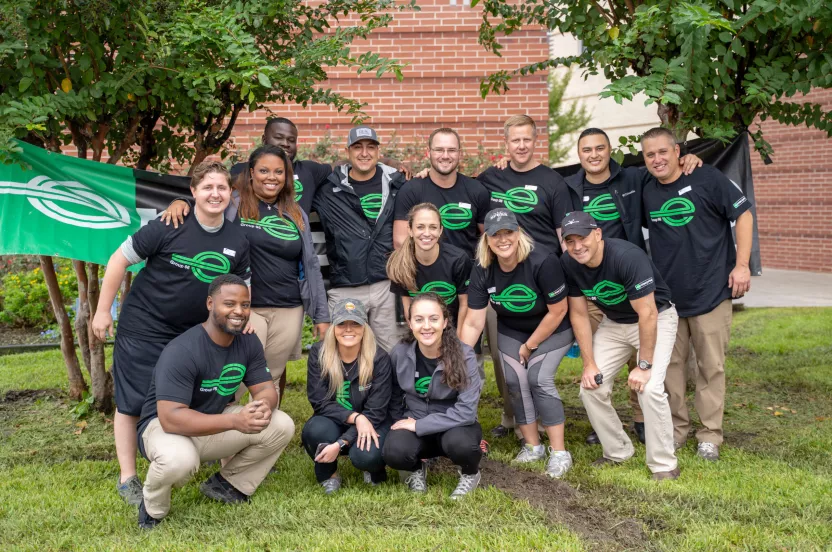Celebrate Arbor Day with 15% off our shop and nursery. Use code LETSGROW. SHOP NOW
The Arbor Day Foundation convenes three days of Water Dialogues, bringing together corporate water stewards
Science has demonstrated that water and forests are essential to human health, social and economic development, and the broader ecosystem. As populations grow and pressures on the environment increase, water availability and quality challenges will also increase for everyone.
This week, the Arbor Day Foundation convened more than 50 corporate water stewards, representing 38 leading corporations, to discuss how trees and forests can be part of the solution to addressing these shared water challenges. Over three days and three distinct sessions, we discussed the intersection between corporate water stewardship and forests. Below are four takeaways from these dialogues.
- Collaboration is key
When addressing shared water challenges through forestry activities, the need to collaborate is particularly crucial. During the discussions, companies such as Procter & Gamble, PepsiCo, Publix, Nestlé Waters, and Facebook highlighted how working effectively alongside local stakeholders, global NGOs, and other corporate peers in watershed restoration projects heightened their impact, defrayed many costs, and authentically elevated their corporate narrative.
Numerous coalitions and collaboratives at the local and global scale were highlighted. The Arbor Day Foundation has found value in efforts such as the California Water Action Collaborative, the Alliance for Water Stewardship, and the CEO Water Mandate. Participating in working groups such as the CEO Water Mandate’s “Benefit Accounting of Nature-Based Solutions for Watersheds” elevates our individual efforts into collective actions to tackle these pressing issues.
- Trees can be an effective part of the ever-evolving water stewardship journey
Photo Credit: Michigan Sea Grant | A visual summation of the intersection between water and forests in the upper, middle and lower watersheds.
According to a live poll taken during the discussions, trees and forests are currently part of the water stewardship strategy or messaging for more than 60% of the 38 companies represented.
Paul Reig, the recent founder of BlueRisk formerly with the World Resource Institute (WRI), summarized the typical water stewardship journey- a refresher for many in the group. The discussion then shifted to how trees and forests can play into collective action interventions in headwaters, riparian wetlands, and in our cities and towns.
- Simple and transparent communications
As with any communication- simplicity is best. Our discussions touched on the complexities of forest hydrology. Keeping messaging consistent and straightforward will inspire stakeholders to understand, engage, and join in the movement towards water stewardship.
Successful messaging around water and forests is founded in transparency. The dialogues explored case studies of companies that publicly share progress toward achieving their water stewardship goals. Trees and forests were highlighted as a catchment-specific approach to achieving elements of these goals within direct operations and broader basin-health initiatives.
- Reliable and accepted quantification and accounting
Wendy Larson, Vice President at Limnotech shared the recent “Volumetric Water Benefit Accounting” or VWBA whitepaper, which has moved the needle significantly on driving collective action in the corporate water stewardship space.
The framework encourages accounting for avoided and reduced water runoff in forest restoration efforts. Measuring these water quality improvements, while not all-encompassing, provide reliable projections of interventions.
While water quality improvements were in focus, trees and forests afforded rich conversation around co-benefits such as improvements to habitat and air quality, carbon sequestration, and job creation. Efforts to “stack” these benefits are continuously improving in working group settings and through the proliferation of the iTree tools co-developed with the Arbor Day Foundation, the Forest Service, and The Davey Institute
What’s Next?
Restoring marginal agricultural lands in places like the Mississippi Alluvial Valley improves water quality, and filters pollutants such as nitrogen and phosphorus.
Reporting on outcomes and impact is important. Nearly 40% of dialogue participants indicated that they would benefit from exploring ways to better quantify and account for water benefits of forestry projects.
The Arbor Day Foundation is currently exploring how to complement existing tools and methodologies such as the VWBA and iTree Hydro to support our corporate friends and partners. In the coming weeks and months, we will be creating opportunities to join discussions and working groups on reforestation and water benefit quantification and accounting while exploring the development of new, robust reporting tools.
Companies expressed a need to identify relevant, impactful, shovel-ready forestry projects. With dozens of active efforts in more than 30 countries, the Arbor Day Foundation and our network of partners and collaborators excels at matching corporate interests with the highest quality forestry projects in the world.
Excitingly, many companies are interested in joining and propelling on-going water stewardships coalitions and collaboratives. By encouraging and facilitating open communication and direct resource-sharing among corporate peers, we hope to foster this interest in collective action.
Learn more about our corporate partnerships here.






